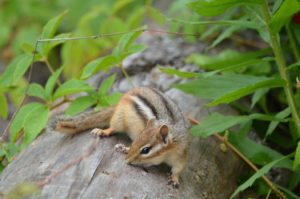
Wildlife
Do not disturb: Practicing ethical wildlife photography
Wildlife photographers on the thrill of the chase — and the importance of setting ethical guidelines
- 2849 words
- 12 minutes
Wildlife

From the iconic beaver to the well-loved polar bear, the animals of Canada play a key role in shaping the country’s identity. As cities expand and populations grow, there can be more opportunities for overlap between the people and wildlife that call Canada home.
When the behaviours of a human or an animal involved in a situation are perceived unfavourably by the other, this is when human-animal conflicts may occur. In some cases, these conflicts can even be life-threatening — not just for animals, but for people as well.
As humans venture further into the wilderness, they are often too complacent, reports say. Simultaneously, some animals are learning to live in human environments as cities and towns increasingly expand.
“There are some very adaptable species that are becoming more adapted and living in areas where people are more prevalent,” says Janine Wilmot, a human-wildlife conflict biologist for Manitoba. “Species like the coyote is one that would be a really good example.”
All across North America, Wilmot says that coyotes have an increased presence in urban locations and that this is quite new for many of these areas. Earlier this summer, a portion of Assiniboine Forest in Winnipeg was temporarily closed due to dangerous coyote activity. The vast majority of reports received by the province concerning coyotes, however, is when there is the presence of a domestic dog.
“Coyotes are actually being protective of their territory,” says Wilmot. She explains that coyotes see the presence of a dog as a direct threat, and approach people with dogs to show they are protecting their turf. “Coyotes aren’t aware that our domestic dogs get food from the grocery store. To them, that’s a direct competition for the food.”
In some cases, when certain species of animals become too close to humans, they will need to be euthanized to protect the public. This is particularly dominant with predatory animals like coyotes, wolves, and black bears.
After becoming habituated to human food and showing increasingly bold behaviour around people, two wolves in Banff, Alberta were killed in 2016. The next year, Banff officials launched a public awareness campaign to reduce human-wildlife conflicts. The goal of the campaign was to educate the public to not feed and approach animals and ensure that wildlife attractants were properly disposed of.“Human food kills wildlife,” signs and posters were put up to remind the public to not litter. Three years later, it seems like not much has changed.
In late July 2020, two wolves in Banff were forced to be euthanized by Parks Canada staff in under a week. In the same month, a black bear was put down in Waterton, Alberta after seeking out food from humans and being deemed at risk to the public.
When animals have access to a human-based food source, like garbage, a cooler in a campground, pet food, or even a bird feeder, they can become food-conditioned.
“Once they have made that association between human presence and human activity and the availability of food for them, then they start becoming more frequent visitors to those areas,” says Wilmot. “They can also become more aggressive in trying to obtain food in those areas.”
As human populations expand, the opportunity for more garbage and food waste to be left around can increase as well. Wilmot says that unless garbage is secured properly, there is going to be greater opportunity for wildlife to access this as a food source. In Manitoba, Wilmot says that the most frequent attractant for black bears involved in conflicts is reported as garbage.
In late June 2020, Manitoba released a bulletin reporting a high number of black bear incidents being reported, reminding Manitobans to stay bear smart in bear country.
“What we tell people in any encounter with wildlife, step one is always to stop, remain calm and assess the situation,” says Wilmot. “Your response is going to be based on the species that you are encountering, as well as what their behavior is telling you.”
Making noise, raising your jacket above your head to appear larger, and using noise making deterrents are other suggestions Wilmot says will help to scare coyotes off.
In terms of wildlife in general, Wilmot says to never intentionally or unintentionally feed wildlife, don’t try to approach or touch wildlife, secure attractants like garbage and make noise while you are in wilderness areas
Are you passionate about Canadian geography?
You can support Canadian Geographic in 3 ways:

Wildlife
Wildlife photographers on the thrill of the chase — and the importance of setting ethical guidelines

Wildlife
This past summer an ambitious wildlife under/overpass system broke ground in B.C. on a deadly stretch of highway just west of the Alberta border. Here’s how it happened.

Wildlife
An estimated annual $175-billion business, the illegal trade in wildlife is the world’s fourth-largest criminal enterprise. It stands to radically alter the animal kingdom.

Wildlife
By understanding why animals do what they do, we can better protect them while making people care